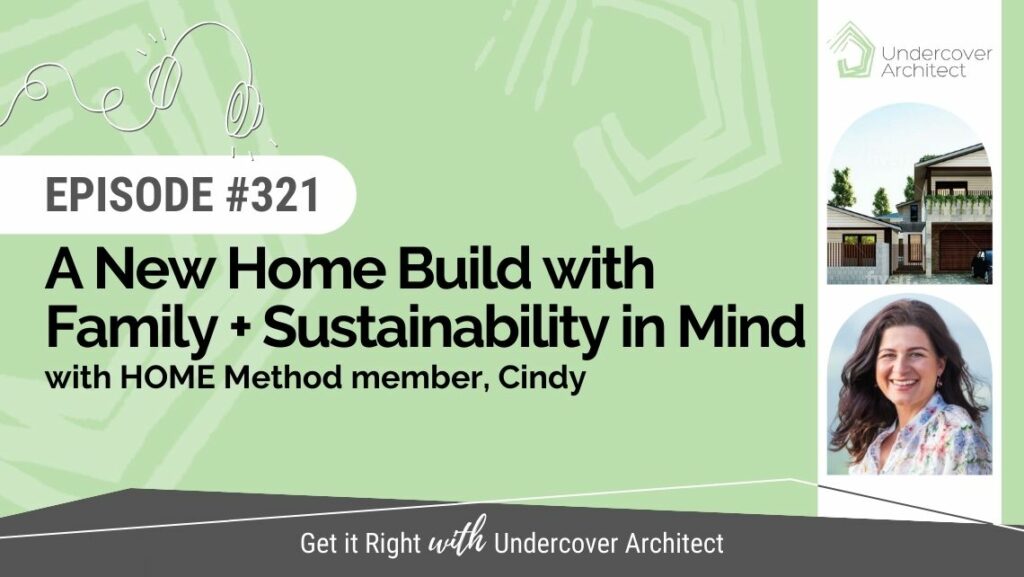
When building a new home, you can be juggling so many priorities.
These priorities can include your goals and dreams, your personal values, as well as budget, the site and what’s available in the local area.
Learn how Cindy created her new home build with family and sustainability in mind.
Listen to the episode now.
Hello! This is Episode 321, and in it, I’m talking with HOME Method member, Cindy.
Cindy is a HOME Method member, but one with a difference. Because she’s also trained in design and achieved her qualifications as a Thermal Performance Assessor, or Energy Efficiency Assessor as it’s also known.
So, designing her own new home, both as client and designer, came with some interesting learnings and challenges.
LISTEN TO THE EPISODE NOW.
Particularly as Cindy and her partner want this home to be a fantastic hub for their family and friends, a comfortable place where they can relax and restore, and an example of the sustainable and functional design of a beautiful home in a beautiful location.
It’s a great conversation where Cindy shares her insights and learnings generously and takes us on the journey of her new home build.
Interestingly, we’ve had a few members in HOME Method like Cindy … those who have studied professionally and are early in their careers, or have been part way through their studies.
We’ve also had members who are builders who join for their own projects and want to access design know-how, or to increase their understanding of the project experience from the homeowners’ side.
And we’ve also had members join for their own projects, and realise they love design, renovating and building so much, and are so passionate about what they’ve learned, they actually do a career switch. We’ve grown building designers, energy efficiency assessors and other professionals inside HOME Method, which is just awesome.
As Cindy shared with me …
“I joined HOME Method 2.5 years ago when I moved from VIC to NSW and I was looking for more practical and in depth knowledge and support to supplement what I had been learning in Building Design at VIC TAFE.
I had done other short courses and units in interior styling, sustainable design etc but until I found Undercover Architect I could feel the gaping chasm in the education I was being offered. HOME Method has provided so much real experience and the support I needed to put this project together.”
Before we jump in, let me give you some timing for context.
Cindy joined HOME Method in October 2021. This conversation about the first part of her project happened early 2024, and her home is due to be finished in late 2024.
Here’s Part 1 of my conversation with Cindy.
Now, let’s dive in!
This is the transcript of my conversation with Cindy about designing and building her new home with family and sustainability in mind.
Amelia Lee
Well Cindy, it is so great to have you here. I’m so looking forward to this conversation because you’ve been such a beautiful voice in our HOME Method community. You’ve always been sharing your progress, sharing your learnings, also your professional learnings as well, to help other home owners in the community, and sharing your amazing progress on your project as well. So I know you have loads of really great knowledge and help to share with those that are listening to this because I’ve seen it inside the HOME Method community, you’ve been such a beautiful member there. And yeah, I’m just really looking forward to being able to spend this time with you, and have this chat and dive into the details of your project.
So can you possibly start by just letting us know a little bit more about who your project is for, who you’ve actually created this home for?
Cindy
Yeah sure, thank you so much. I’m really looking forward to this too, so thanks for having me. So our project is essentially for my family, which is my husband and I. We don’t have any kids but we’ve got two Labradors, so they’re kind of like having two toddlers around. And our extended family, so my mum lives close by, Shane’s family’s all down in Melbourne. So having the capacity to have people come and visit, all of our friends are very distributed. So having them come here and enjoy this beautiful place, and just having the capacity to be at home and have people come on holidays to see us.
Amelia Lee
That’s lovely. And so can you tell us a little bit more about your project, and where you started, what you envisaged this would be as a finished home, what really were your goals and your ambitions for it and the information that you started pulling together as a bit of a brief for what you wanted to create?
Cindy
Yeah, so it’s interesting, we didn’t know that this was where we were going to be two years ago. So we’re on the mid north coast, and we moved up here while we were building a duplex for my parents, and we were going to be there for a little while, that kind of thing. And we had in our mind that we were always going to buy acreage and be out on some space and do all that sort of stuff. But while we were waiting for the duplex to be finished, we were in a holiday house, and we just ended up being in this little spot just south of Port Macquarie and it’s just gorgeous. It’s absolutely beautiful, and we were embraced by the neighbourhood within two days of being there, and we ended up being here for like four months.
We know how special it is to find a place and a community like that, so when the block that shared our back fence came up for sale, we jumped on it. And it’s a 613 square metre suburban block, but right near the beach, right in the middle of this neighbourhood. And so we jumped on that, started designing it.
So I had done some training in building design previously, before we moved up here. And I started my training and thermal assessment through that process of buying that block and that kind of thing. So I had a little bit of knowledge behind me and I was really keen to test out my ideas and put your money where your mouth is kind of thing, and give it a go and see what we could create.
Original house built on the block of land [SOURCE]
Amelia Lee
Yeah, there’s no training as an industry professional, like doing your own home, but just you get to explore those things that clients won’t entertain but you think could be good ideas. And then, obviously, also learn everything from the ground up in terms of all the bones of it.
So you joined HOME Method in October 2021, I think it was, and so where in the process was that? And what was the decision making in terms of, “Okay, we’ve bought this block of land, we know that we’re going to be doing a project.” What was your thinking? Because obviously you did have some experience in terms of you’d been doing some of the training in building design or that kind of stuff, to actually go and invest in that structured learning process.
Cindy
Yeah, for sure. So I think October 2021 was right early in that design process. So, I think, whilst I had some training, I definitely didn’t have any experience. I think we’ve got lived experience, both my husband and I have lived in over 40 different houses in our lifetime, and travelled to so many different others, and we go AirBnB quite often. So the first thing that we do when we walk into a house is assess the floorplan, what works, what doesn’t. So we had a really good feel for that. But in terms of actually me designing something, totally inexperienced, and I was very well aware of what I didn’t know. And I knew that there was probably going to be a whole heap of things that I didn’t know yet.
So I was really hungry for that, and really wanting to find that knowledgeable expertise and practical support, And that’s what HOME Method really gave me. And even just listening to the podcast in the lead up to that, it was a real taste tester for what HOME Method could provide. It was like the heavens opened up, to be honest. And having the access to your knowledge and expertise, and the HOME Method community and everybody that’s a part of that has been amazing. There’s no way I could have got to where we are without that. So yeah, it’s been awesome.
Amelia Lee
Yeah, that’s so fantastic to hear, because that’s the goal, is to help you feel supported and guided through that process. And yeah, I’m always really interested, because people join for different reasons and at different points in their project. And so it’s really great to hear what that has meant for you. So this block of land that you bought, it had a house on it already, didn’t it, when you bought it?
Tree removal and scraping on site [SOURCE]
Cindy
Yeah, had a little Fibro beach shack with an asbestos roof. So yeah, we knocked that down.
Amelia Lee
So what did you want to create when you were thinking about what you would design, what was your goal in terms of the kind of finish time that you wanted to create?
Cindy
Well, the first thing in my mind was always orientation, and that’s something that you teach a lot as well. And the training that I did down in Melbourne, that kind of stuff is just a no brainer. It’s what you do… Insulation, all that kind of stuff, it’s just what everybody does. Moving up here to the mid north coast, it was a completely different conversation with the trades, and things around. So I felt like I was doing something different up here, which was good. That was my goal, I wanted to do something that could be a bit of an example, not only be our own home and be a place that our friends and family could come and visit, but also be a bit of an example of what can be achieved up here.
So trying to bring all of these little bits in that I’ve been learning along the way into this project. So we had the blue sky vision of what we were going to create. There was a library and there was a lap pool, and there was all these sort of stuff, and you start putting lines on paper and realising that there’s sewer lines running through here and there and wherever. And so the constraints come in. So yeah, we created what we could out of the block without trying to do too much, so it was a bit of a balancing act.
Amelia Lee
And you have obviously had some professional training through this, and then you made the choice to pursue your energy efficiency assessor training as well. So you’re now able to provide energy efficiency assessment services for other projects. So what prompted you to pursue that? And how have you found working through that design process of this home with, obviously, you’ve had sustainability and energy efficiency in mind because you’ve learned about orientation and insulation and those kinds of things, you wanted to maximise the opportunities on the block… How have you seen that through your lens of being somebody who’s had that professional training, and, I suppose, is exploring what’s possible, because it is your own project and you’ve got a little bit of leeway in terms of what you can play with as well.
Marking up the kitchen plans [SOURCE]
Cindy
Yeah, for sure. And I think, when I first got into building design, it was for that reason is I was really passionate about sustainability and energy efficiency, and I’m a firm believer that good homes, and well built homes that are comfortable and good for people and good for the environment and just good for the society in general. So I came into it with that idea, and so when we moved up from Victoria, I was halfway through the building design course. And the building design qualifications nationwide are very different state to state, and they were in a bit of a state of flux. And so rather than try and battle against that, for the time being, I switched to thermal efficiency, which I was going to always do it anyway. So I did that through the design period.
Unfortunately, I didn’t actually complete it until after our DA had been submitted. So I wasn’t unable to do the certification and all that sort of stuff myself, so I was engaging other people to do that, which that, in itself, was an interesting experience. Because I ended up engaging probably about three different assessors and had very different experiences with each of them.
Amelia Lee
Can you say more about that? Because I think that’s really interesting, because we talk a lot in HOME Method about needing to kiss a few frogs sometimes before you find the one that’s going to get it. So, yeah, what was your experience, in terms of what you were looking for, and then how you were having to dig through? And yeah, and I suppose even just that, that decision of like, “No, this isn’t working, I’m actually going to have to let this person go and try and find a niche.” Because a lot of people can find that too confronting, and so they just stomach the service that they’re getting. How was that working for you?
Cindy
Yeah, so it was interesting. I think because I was a student in that area, I was probably looking for something a bit more specific in the kind of service that I wanted from my assessor that I was engaging. And so I guess the different experiences were they varied from that certain transactional experience where I think a lot of TPAs are used to just writing and rating, ticking it off, getting it ready for DA, and that’s it.
Whereas I was looking for a much more consultative experience where I’m like, “Oh, what about this? What about this? Can you test that?” And also having someone make some suggestions to me as well. So there was varying degrees of that across each of those people that I engaged, and I think that just solidified why I was doing it as well. Because I think it should be a consultative experience, and I know, with the change to seven stars and all that, that’s becoming much more part of the conversation now is getting your TPA involved early. And it’s more of a consultative engagement, as opposed to just ticking the box at the end. Because it can be really costly and odd, some of the things that come out, if they’re just doing their writing, and they’re like, “Oh, well, just take a ceiling, put a clothesline out the back, you’ll be alright.” But no, I know it can be better than that.
Amelia Lee
Yeah. And it must be fascinating because alongside that, you would have been increasing your level of knowledge through the training that you were doing. You said you didn’t get your own qualifications till you were at after the DA, but still, you would have been learning through that. And so looking, I suppose, for almost like a pseudo mentorship in the way that this person was working with you, and then being sorely disappointed that you weren’t actually getting what you needed because you knew there was more to the process. That would have been really interesting.
Cindy
It was, it was. And to be fair, I engaged a couple towards the end of that process that were amazing, and did give me that mentorship kind of experience as well. So I had actually done my software training by then. So as soon as I got training how to do the software and be able to do the rating myself, I just dived straight into it, testing all these ideas.
Amelia
I remember you doing that.
Cindy
And it works for me. That’s the way I feel confident in making decisions is because I’ve tested out a gazillion things, and it was the same with the design. And yeah, I think other professionals can ask a lot of questions, which is fine, but it’s just much easier to be able to test things out yourself and a bit more time effective.
Amelia
Yeah, that’s so exciting. And I love that you’ve had that first hand experience of seeing the power of it, because it’s going to bode so well for how you can help homeowners when you’re actually assisting them as a consultant. And the power of the energy efficiency assessor is so underutilised in conventional design and construction.
First stage of the Pro Clima wrap [SOURCE]
We have these systems like passive house, where the modelling is seen as a powerful design tool and the whole system is built up to support that, whereas conventional construction, it’s been this siloed, bolt on thing that happens at building approvals. But as we teach inside HOME Method, the further forward you can bring that, then you’re not having to bat at shadows for what design decisions you’re going to make. And when you are debating, “Oh, should I invest in double glazing or tinted glass or this insulation”, you can actually make an informed decision based on the modelling. So all of a sudden, there’s a binary piece of data that tells you what that’s actually going to achieve for you, which then helps you see how much value that adds to the decisions about where you spend your budget. So I love it. I love that you’re going to be able to help homeowners in this way because you’ve had this firsthand experience. I’m really excited.
Okay, so if we wind back, you’re starting out, you’ve got this vision of what you want to create, you’ve got very clear goals, I think, about it being this hub and this haven for your friends and your family, creating a home that suits its climate, suits its site, wanting to have this process, what were you nervous about as you’re starting out? You’ve got some of this industry understanding through some of your training, but what were the nerves that you had about how this project was going to go and what that was going to mean for you?
Cindy
Oh, yeah, I’d been reflecting on that a little bit over the last few days. And I think the nervousness was that lack of practical experience, and knowing that this is the first time I’ve done a design from scratch of our own, and just knowing that I needed that support for various different things. And what HOME Method gave me the confidence to do was actually reach out to lots of different other professionals, including yourself, to have a look at the design and just sanity check what I was doing, and give me a bit of feedback. And I did that both with the design, but I engaged a town planner, which was gold… Just various other things that I probably wouldn’t have thought of doing without having gone through that HOME Method process.
Amelia Lee
How was the town planner helpful for you?
Cindy
Well, I’ve never gone through the DA process myself. And so I probably should also mention, I engaged a builder very early on. I found a really great builder and engaged him really early on. And we agreed that I would take the design documentation and the approval process up to DA, and then hand that over to him and he’d do construction from then on. So yeah, engaging a town planner, and a local one that knew our Council and just knew how to word everything in the way that they like, was just amazing. And it just meant that the whole process was smoother. Didn’t necessarily make it any quicker, but it was just smoother. There was hardly any questions come back, and when they did, and I wasn’t sure what they were asking for, I could go back to her and ask her for a bit of advice. And so yeah, it was really, really helpful.
Amelia Lee
Yeah, it probably did make it quicker because you didn’t hit those stalls where they did need to come back for you to hear it. But there’s only so quick it can be. And in terms of your budget and thinking about your budget and setting your budget, how did you go about that and factoring that in? And then because you were doing the design yourself, navigating those design decisions, keeping your budget in mind, what did that look like in terms of setting and managing your money in those parts of the project?
Cindy
Yeah, good question. So my husband and I have done a few different investments over the years, but never actually built something from scratch like this. He is a chief financial officer, or kind of our family business, and so he’s very good with the money. I think very early on, we delineated our roles in this project. I’d come up with what we’d be spending our money on, and he’d tell me how much I had to spend.
Amelia Lee
It’s interesting, isn’t it, though? Because I think that does happen with couples is that if you can figure out what your strengths are, and then lean into those and work together collaboratively, that can work really well.
Cindy
Yeah. But I mean, having said that, we’re not siloed, in that every step along the way, I’m checking with him what he wants. We made up a big list of our desires and what we wanted from this home at the very beginning, but he’s quite comfortable to take that step back and let me get into all the detail, and project manage it and that kind of thing. And I’ve had to step back from needing to know the details of where all the money sits and that kind of thing. He’s very good with that, I’ll leave him to it. But we try not to ever overstretch.
So, I think at the very beginning, we did a bit of a value analysis of what the houses were in our area, and just a bit of an assessment of if we wanted to sell it down the track, what we potentially could sell it for, and therefore how much made sense to be investing in the build. And that gave us our benchmark, I guess. So yeah, that’s where we headed.
Amelia Lee
And in terms of you sitting down and getting clarity around what you wanted to create, was that an easy process for you? Were you both on the same page generally about what you wanted to create, or did you find that there were sticking points that you as the designer thought, “Okay, how am I going to bring this in to make it a fair compromise where we both feel like this home reflects us”? Because you were kind of playing the designer and the client at the same time, which can be a really tricky thing to do to maintain objectivity, so how did you find that setting of the goalpost together?
Cindy
Yeah, pretty easy, actually. We both have very similar ideas about what home looks like for us, and it’s more about how it feels. So very early on, we made that list. I think it was even before we bought the block, we made a list of what we wanted our home to feel like, the kind of things that we wanted to be able to do in our home, to see, to hear, to feel. It was a very sensory thing for me, particularly. And the site, and the block tells you what those constraints are, and it gets created from there. So very regularly, I’d go back to that checklist. And during the design process, I’d go back to our list of needs and wants, and make sure that we’re headed in the right direction. So yeah, it was really helpful to do that.
Amelia
Fantastic, I always love hearing how much clarity it provides you, and that place to come back and check your decisions against because that’s the whole idea of taking that effort of defining that for yourself upfront.
And I think some people worry that, “Well, I don’t know really what this project is going to look like, I don’t know what it’s really going to cost me. I don’t know what my money is going to buy me, so maybe this stuff will unfold as I step in and I start to realise what can I have, what can’t I have”, rather than stepping right back to first principles and figuring out what your priorities are, and then having the ability to actually assess what’s valuable to you, what’s going to deliver on those priorities, and having that place to return to to then guide all of those decisions going forward. So it’s really fantastic.
And it’s great that the two of you could come to that together in such a cohesive way as well. But equally, I know there’s couples who might find it sticky, but it gives them the ability to have a conversation about it without it being at the table of the architect or building designer, arguing about whether the bedroom should be at one end of the house or the other, because they’ve had the conversation well before about how they want the home to feel and what’s valuable to them. So it’s really fantastic to hear you describe how that’s played out for you.
And so you mentioned that you brought the builder on quite early… In terms of you looking for the builder and making that selection and then crafting that relationship, particularly with you, I imagine you possibly would have felt quite inexperienced in terms of this being your first go at designing a home… How did you first choose that builder and then set up that relationship for success in terms of how you were going to be working together?
Cindy
Oh, so I was really keen to get a builder on early, both to sanity check what I was doing. But I’d learned more about the PAC Process through your podcasts and things like that, so I was really keen. It just made sense, made absolute sense, and I just wanted to make that happen. So I looked for a few different builders, asked for some feedback here in our local area, who was good with custom builds. We’ve got a lot of volume builders up here, a lot of housing development sites happening so there’s a lot of those around, but there’s a few custom builders as well. So just sorting through those and trying to find one that would fit with me, I think I actually only ever ended up talking to two. And I had shortlisted it based on their previous projects, the kind of values and things that they talked about on their website.
And there was this one builder that was Green Smart certified, talked about lots of sustainability and had partner businesses with insulation and all that sort of stuff, so it was just ticking all the right boxes in my mind. And I walked into his door and said, “I really want to build a sustainable and energy efficient home.” And it was just like, “That’s music to my ears. Nobody walks in the door here.” Most of the builders when you say that to them, they’re like, “Oh, we live in a beautiful climate, what do you want to worry about that for?” So yeah, we matched straightaway. And I asked him whether or not he was aware of the PAC Process, and if he was keen to do that, and explained what that meant, and he was like, “I’m quite happy to meet with you quite regularly during the design process. And let’s just see where that goes.” And I think he, very early on, could see the future of our collaboration. And so I’ve been meeting with him for two years now, through the design, and now, we’re moving on into the next phases. But we’ve had that ability to build such a trustful and collaborative working relationship. It’s been really, really beneficial to have that time, and I’m just so grateful that he was open to doing that.
Amelia Lee
Yeah, and ironed out all the kinks of how do you converse with each other, how do you make sure you’re hearing each other and what is really important and getting that input. As somebody who is new to the world of design in this way, in terms of what it’s taught you about how to put together houses so that they do tick those boxes of, this is sustainable, energy efficient, and also constructible… I mean, my experience as an architect, was I received so much mentorship from builders early in my career, who had me thinking about every line that I put on a page has to be a piece of material that people are going to handle, put into a truck, and then how do we make it be able to be built efficiently on site… So there’s so much you can gain from that kind of knowledge and experience. How’s that informed your design? How have you taken that advice on board and that regular conversation with him?
Cindy
It’s been great. I think the training that I did for building design, we did a number of construction units in that, and they were priceless. They gave me a really good basis of just understanding how walls get put together, and that sort of stuff. But you don’t get into the detail of how that practically works on site, in terms of getting things delivered, and working out materials and that kind of thing.
Steel supports have been installed [SOURCE]
So yeah, I think learning about how different materials are handled, and how different things needed to go together, particularly, how different wall claddings and things like that get joined, and just thinking about that, and putting an energy efficient spin on it, and how to keep the walls airtight and that kind of thing. He’s also blower door test qualified, which was the other tick in the box for me. So we’re doing a few blower door tests throughout the process. So yeah, just learning those little details, they meant a lot along the way. And having his expertise and view on that was perfect. The thing that was missing, I think, early on, and I tried to engage them early on was the engineering. So finding a consultative engineer is very hard, I found, very difficult. So yeah, I think they’re all just so busy, that trying to get someone that’s happy to consult and provide, I guess, initial documentation as opposed to the final documentation, I found that really challenging.
So once we got started talking to an engineer, and a few things had to change in terms of how they wanted to do stuff, but that was okay. It’s problem solving, you move and you change, and things just roll along.
Amelia Lee
I love how dismissive you are of how incredible your mindset is to be resilient and strategic in the work that you’ve done, to be able to navigate this and manage your stress throughout it. You getting educated and informed has set you up really well to be able to navigate a project and deal with those moments with some level of comfort. So it’s a tremendous credit to you.
Cindy
I still get stressed, there are stressful moments. But you know what you do have control over and what you don’t. So there’s some things that you just have to accept, and you just move along, and you change things to accommodate. And I think that is the other really important part of building that relationship with the builder over the last couple of years is that problem solving is a collaborative thing. And we both have confidence in each other. There’s only been a couple of times where I felt that something that didn’t sound right, like I was being told something by somebody else, or just something’s happened and it just didn’t feel right, and I couldn’t necessarily put the words to it at the time, but we’ve learned that there’s usually a reason for that. And I know this project intimately, so there’s usually a detailed reason for why it doesn’t feel right and it just takes a little while to work that out. But yeah, he’s happy to respond to all of those things, which is great.
Amelia
Yeah, and that’s brilliant, because that’s actually your gut telling you there’s some red flag here. And whilst I can’t put my finger on it exactly, I’m not going to ignore it. Because I know if at the very worst, I work this out, that there’s nothing to worry about, at least I haven’t ignored it and potentially miss something that could be problematic. Whereas so many, they don’t trust that feeling that they’re getting, or they feel too nervous to speak up, and they don’t want to seem foolish, they don’t want to ask silly questions, or they don’t feel like they’re supported enough by their team to be heard in those moments. And so they just let the red flags slide and then the red flags just keep getting. I mean, I find that’s the way, isn’t it, with anything, that the universe will give you a gentle tap on the shoulder and then will start patting your cheek and then will start hitting around the head and then will give you a great big kick up the butt.
RESOURCES:
Clare’s Instagram Profile >>> https://www.instagram.com/shindysbeachhouse_build/
Access the support and guidance you need (like Cindy did) to be confident and empowered when renovating and building your family home inside my flagship online program, HOME METHOD >>> https://undercoverarchitect.com/courses/the-home-method/
Learn more about how to interview and select the right builder with the Choose Your Builder mini-course >>> https://undercoverarchitect.com/courses/choose-your-builder
Access my free online workshop “Your Project Plan” >>> https://undercoverarchitect.com/projectplan
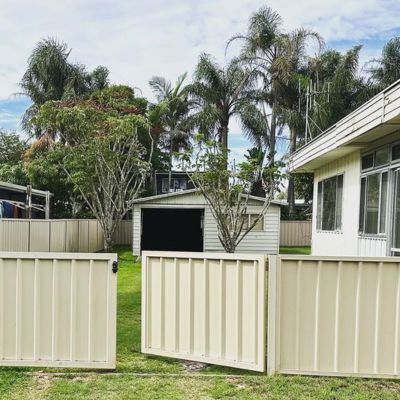
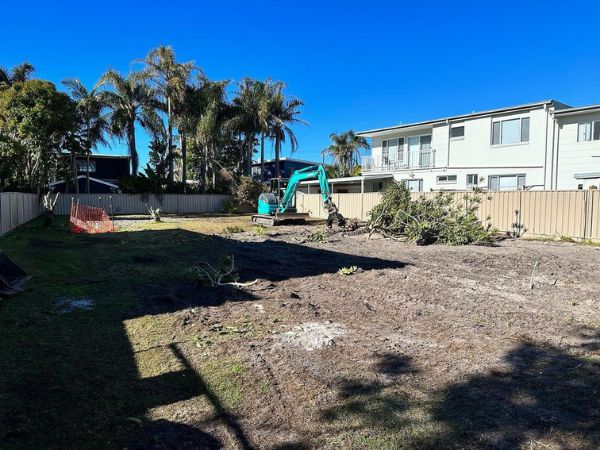
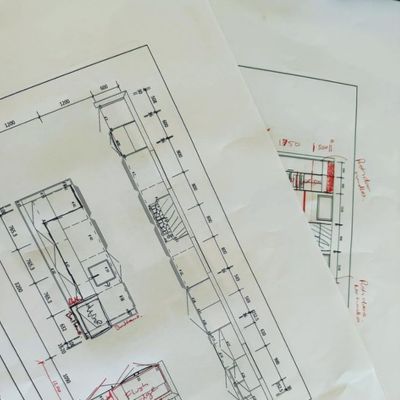
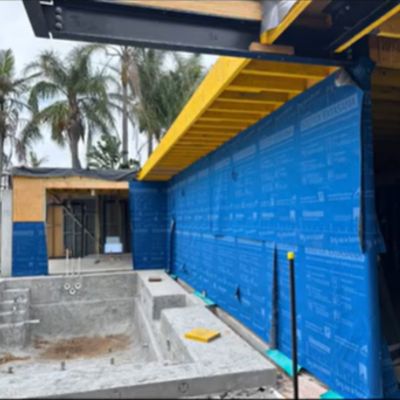
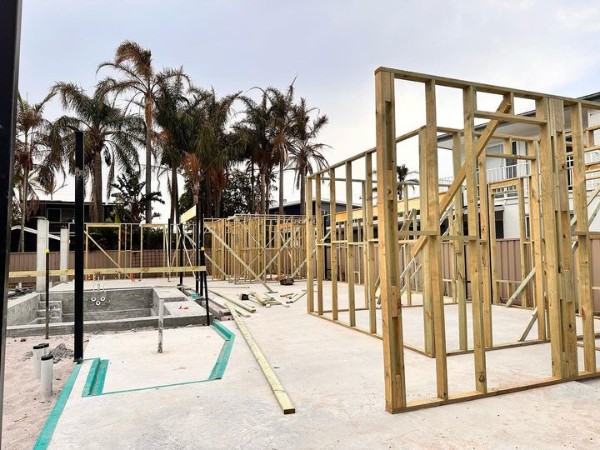

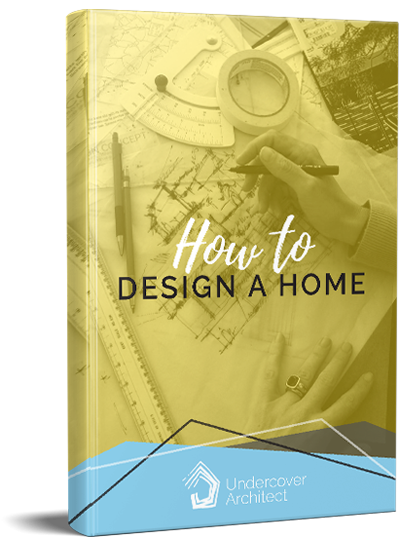
 With over 30 years industry experience, Amelia Lee founded Undercover Architect in 2014 as an award-winning online resource to help and teach you how to get it right when designing, building or renovating your home. You are the key to unlocking what’s possible for your home. Undercover Architect is your secret ally
With over 30 years industry experience, Amelia Lee founded Undercover Architect in 2014 as an award-winning online resource to help and teach you how to get it right when designing, building or renovating your home. You are the key to unlocking what’s possible for your home. Undercover Architect is your secret ally
Leave a Reply